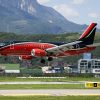 In recent years, there has been a surge of innovation efforts in aviation, driven by a need for sustainability, process optimisation, and cost-efficiency. However, there is one area of aviation that has yet to catch up with the rest of the industry – airline distribution management. Despite the advancements made in other areas, there has been little progress in how airlines manage their distribution channels.
In recent years, there has been a surge of innovation efforts in aviation, driven by a need for sustainability, process optimisation, and cost-efficiency. However, there is one area of aviation that has yet to catch up with the rest of the industry – airline distribution management. Despite the advancements made in other areas, there has been little progress in how airlines manage their distribution channels.
During the 1960s, the rise of travel agents led airlines to shift their focus from selling tickets directly to end customers to a wholesale model facilitated by Global Distribution Systems (GDSs). These systems connect airlines with travel agencies and agents but are notorious for charging fees for their services, providing poor technical support, failing to translate the full scope of airline services, and holding most user data, which prevents airlines from understanding their customers’ needs and optimising costs. Moreover, even today, the contracts airlines sign with GDSs often limit their ability to innovate in the distribution landscape beyond their website. It’s no surprise that airlines have begun seeking modern and up-to-date solutions and exploring new distribution channels and ideas.
One such channel is New Distribution Capability (NDC). Launched by The International Air Transport Association (IATA) in 2015, this initiative encourages airlines to use modern data exchange formats to enable greater inventory control and allow carriers to market wider sets of flight services to online travel agencies and travel agents, bypass GDSs, and take control over customer data.
Dr. Ricardo Pilon, an instructor at Aeroclass, an aviation digital learning platform, suggests that airlines seeking innovative solutions should consider the introduction of artificial intelligence (AI). “By leveraging smart technology and advanced techniques, AI can help level the playing field and provide airlines with the tools needed to win back customers, optimise seat sales, and manage distribution costs. With AI, airlines can analyse customer behaviour and preferences, improve revenue management, and tailor their marketing strategies to specific target audiences.”
According to Pilon, AI has tremendous potential for optimising distribution in the aviation industry. “Airlines are constantly seeking to drive bookings to direct, lower-cost channels that also offer better engagement with customers. AI can assist with channel optimisation by leveraging data and calculation-based decisions to improve retailing, pricing, service personalisation, dynamic pricing, and other complex areas.”
As the aviation industry continues to develop, AI has the potential to revolutionise airline distribution by providing airlines with new and innovative ways to optimise revenue, enhance the customer experience, and reduce costs. With AI technology continuing to evolve and become more sophisticated, we can expect to see even more advanced solutions that help airlines stay ahead of the competition. By embracing AI and other emerging technologies, airlines can not only streamline their operations but also create more personalised and engaging experiences for their customers, ensuring long-term success in a highly competitive market.





